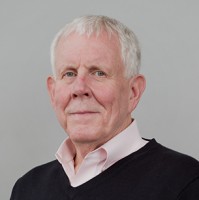
James E. Moran
- Courses2
- Reviews2
- School: University of Massachusetts
- Campus:
- Department: Engineering
- Email address: Join to see
- Phone: Join to see
-
Location:
220 Pawtucket St
Lowell, MA - 01854 - Dates at University of Massachusetts: September 2014 - January 2016
- Office Hours: Join to see
Biography
University of Massachusetts - Engineering
Resume
1979
MS
Communications
FSU
Advanced Graduate Study
Bell Labs Corp Ed - Carnegie Mellon and Princton AT&T Corporate Campuses
1968
Studies consistent with military mission.
Applied Mathematics
University of Maryland College Park
Vietnam Veterans of America
Life Member - Firebase 116
Member
United States Naval Cryptologic Veterans Association
Chapter 110 Service Officer - Life Member
DAV (Disabled American Veterans)
FrameMaker
Proposal Writing
Research
Community Outreach
Microsoft Office
E-Learning
Leadership
Captivate
Editing
Grant Writing
Windows
Higher Education
Technical Writing
Statistics
Technical Documentation
Instructional Design
Teaching
Photoshop
PowerPoint
Public Speaking
Log Periodic Antenna
Currently designing a Log Periodic HF antenna (7.5 – 21.5 MHz) for use within limited space environments - think university building roofs. PVC elements to be wrapped with 18 gage stranded copper wire and fed with 450 Ohm window line. The antenna will radiate 250 watts of RF from a SWAN 500 transceiver (SSB or CW modes) into the final antenna designed which will be located at a height of 30 vertical meters above a flat roof.
472-479 kHz and 135.7-137.8 kHz
Investigations into data throughput for 472-479 kHz and 135.7-137.8 kHz during seasonal cycle changes and weather abnormalities.
Principles and History of Radio
Teaching \"Principles and History of Radio\" - 3 credit course offered thought the Department of Electrical Engineering
UMass Lowell: The course develops the theory of electricity from an historical perspective. Sufficient background in circuit theory
resonance
field theory and radio waves is given to provide an understanding of the principles of radio from its antecedents in the nineteenth century through the invention of the transistor in the mid twentieth century. The fundamental contributions of
for example Volta
Oersted
Morse
Maxwell
Faraday
Hertz
Lodge
and Marconi are considered. In the 20th century the technical advances of such figures as de Forest
Fleming
Fessenden
Armstrong and Shockley are studied. The growth
regulation and culture of American broadcasting are also central to the course: such as the technical feasibility of Marconi's claim of a trans-Atlantic transmission between the North American continent and Europe in 1901
the first voice radio transmission of Fessenden on Christmas Eve 1906
the impact of the Titanic disaster on laws regulating frequency allocations and outcomes leading to the development of shortwave radio technologies by amateur radio operators
the rapid technical development of radio journalism brought about by Edward R. Murrow during the Austrian Anschluss leading to WWII
etc. Laboratory work including the creation of circuits critical to the application of theory is required and students may use this course toward fulfilling the General Education (science/experimental component) requirement of the University.
Sound Recording Fundamentals
Teaching Sound Recording Fundamentals a required course for undergraduate recording engineering students. The course discusses
analyzes and experiments with four fundamental principles in electrical theory/engineering: resistance
inductance
capacitance and resonance. It serves as an introduction to direct current and alternating current analysis of electric circuits. Students use equations to calculate values for various circuit configurations. They then build and test the circuits in laboratory exercises. Students learn to use voltmeters
ammeters
and ohmmeters
the use of bridges and oscilloscopes
phase analysis of AC circuits
vector diagrams to simplify calculating complex multi-source voltages
Trigonometric Fourier series
BODE plots
transformers
relays
solenoids
mechanical analogs and magnetic analogs with the application of Fourier and BODE techniques. Students are also introduced to DC and AC motors and generators
residential circuits
equipment protection
and introduction to digital logic including minimization techniques.\n \nPre/Co-Requisites: Pre-Req: 92.132 Calculus II with a grade of 'C' or better.\n
Moran
Moran
U.S.Navy
UMass Lowell
AT&T/Lucent Bell Laboratories
AT&T Bell Laboratories
AT&T/Lucent Bell Laboratories
Director - College of Engineering Tech Communications/Senior AdJ Professor
UMass Lowell
U.S.Navy
NSA
Military - Naval Cryptologist CTT rating\nJoint Forces - National Security Agency (NSA)
Cryptologist
Committee chartered to investigate
develop and implement information management tools.
AT&T Bell Laboratories
Possible Matching Profiles
The following profiles may or may not be the same professor:
- James Moran
University of Prince Edward Island - History
Possible Matching Profiles
The following profiles may or may not be the same professor:
- James Moran (30% Match)
Adjunct Instructor
Los Angeles Community College District - Los Angeles Community College District - James Moran (30% Match)
Adjunct Faculty
University of Massachusetts Lowell - University Of Massachusetts System (ums) - James Moran (30% Match)
Adjunct Faculty
University of Massachusetts Lowell - University Of Massachusetts System (ums) - James Moran (30% Match)
Adjunct Faculty Continuing Education
University of Massachusetts Lowell - University Of Massachusetts System (ums) - James Moran (30% Match)
Adjunct Faculty Continuing Education
University of Massachusetts Lowell - University Of Massachusetts System (ums)
